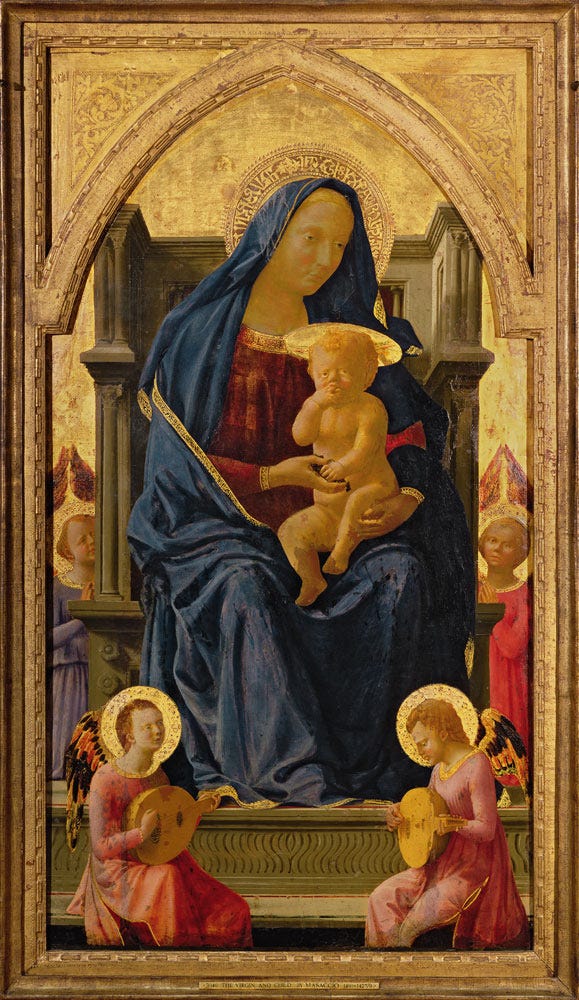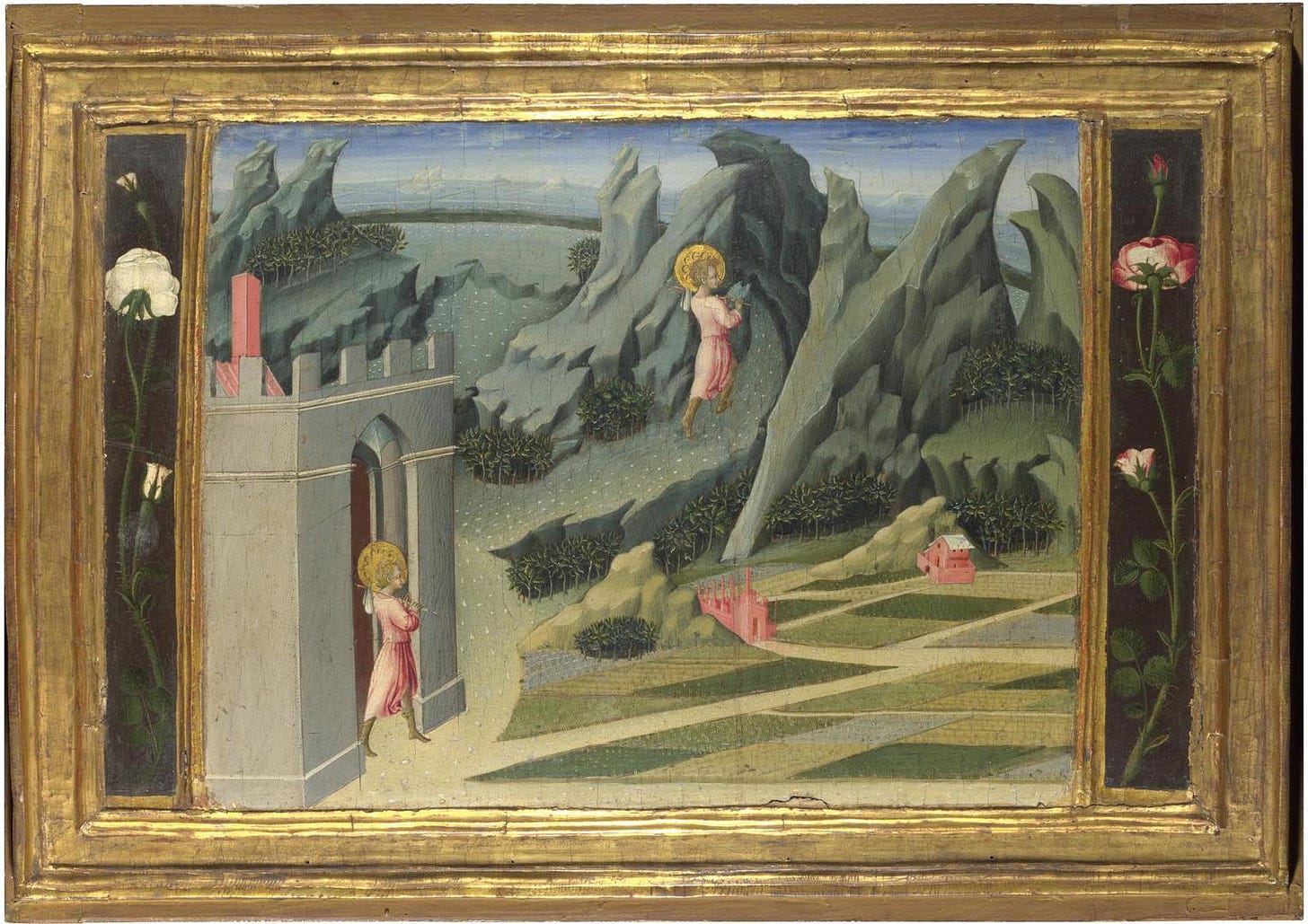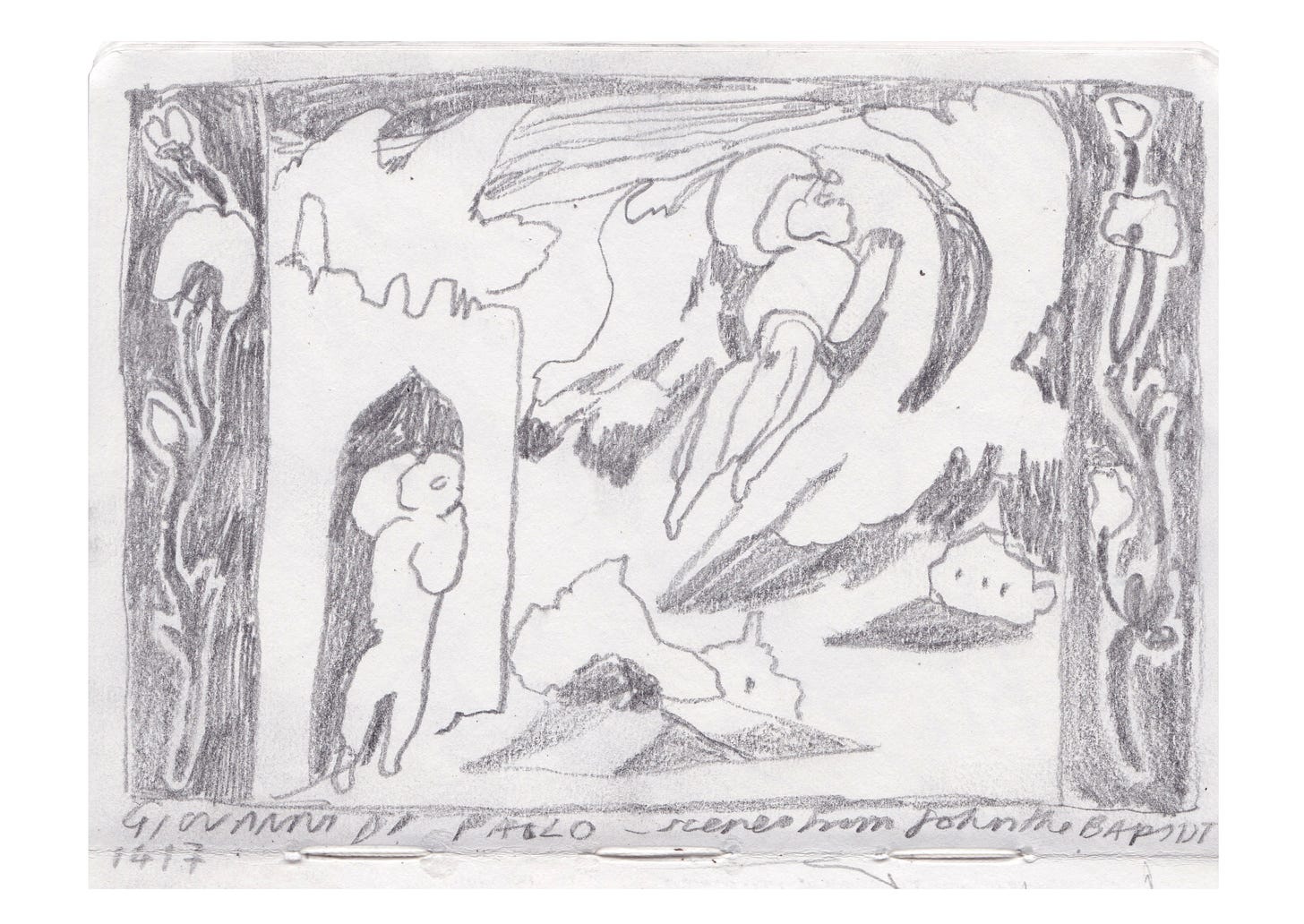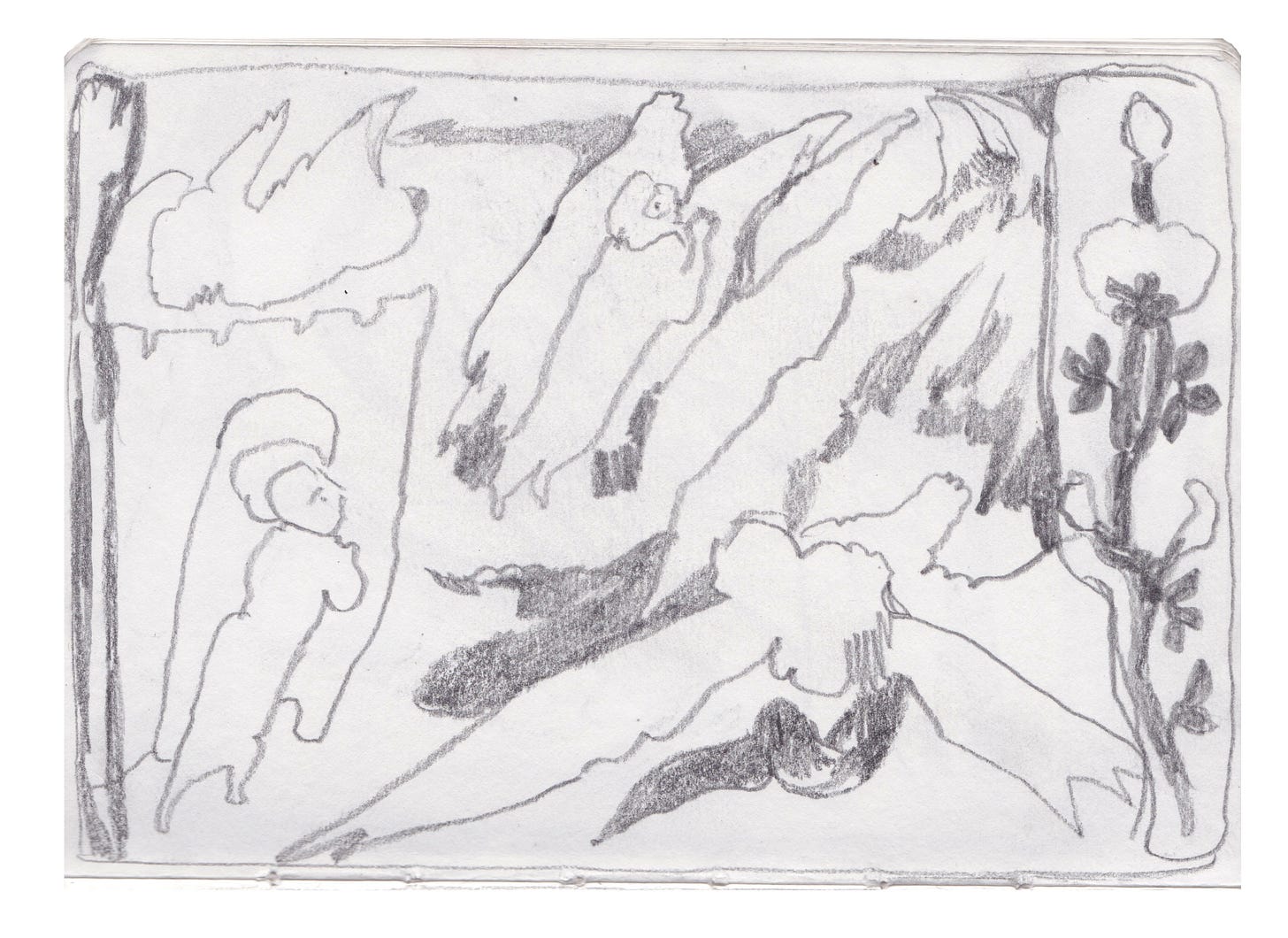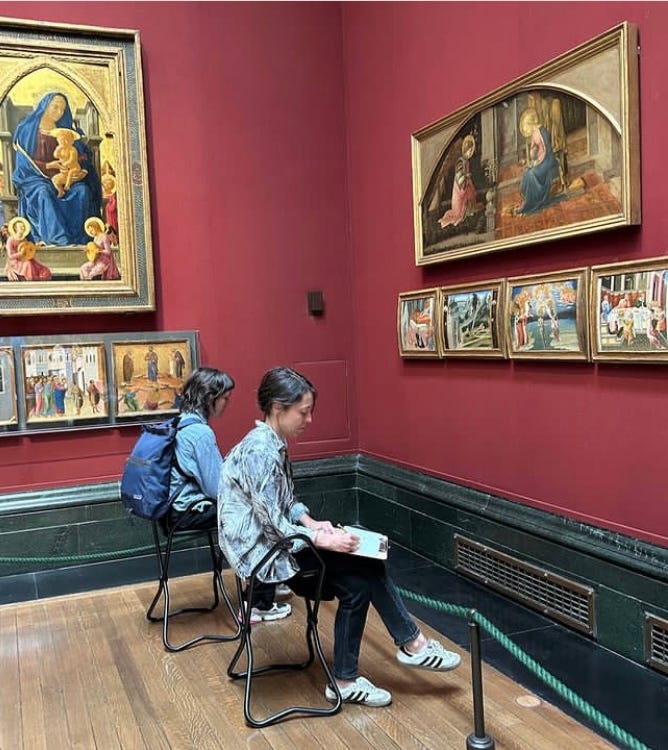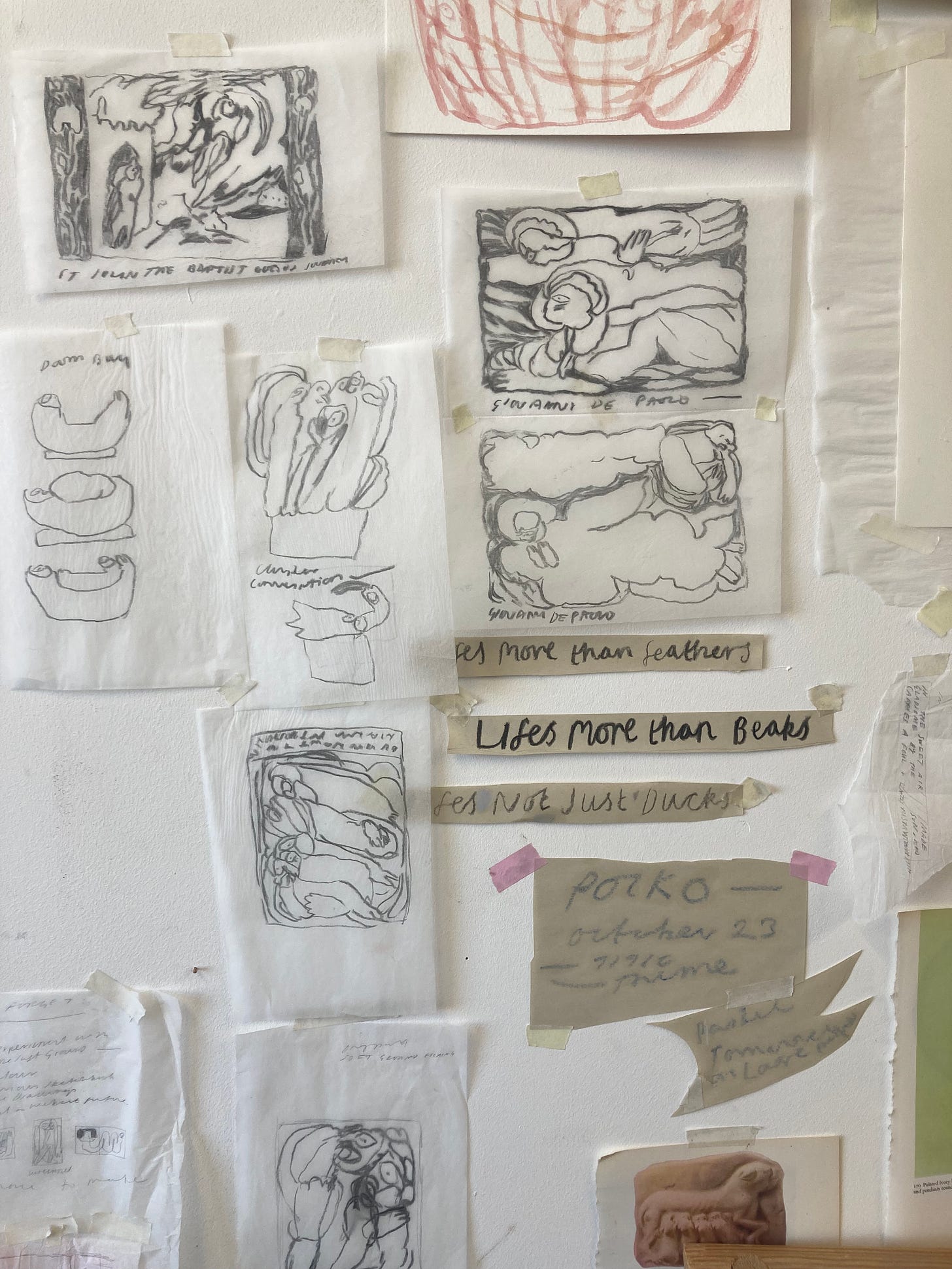Finding My Way Through the Gallery
I used to avoid the Sainsbury wing at The National Gallery. I would walk straight past it and make a B-line for the Impressionist wing - where I would find the classic favourites like Degas, Gauguin and Picasso. I enjoyed the rich colours and painterly textures within the paintings but most of all I enjoyed the subject matter. Real people of the day, captured beautifully with expressive brush strokes and confident colour palettes.
The Sainsbury wing in contrast holds a large collection of early Renaissance paintings from the 13-1500’s which are highly stylised and usually depict religious scenes. You’ll see lots of saints, priests, The Virgin Mary and Jesus (and most definitely some ugly babies).
This year The National Gallery closed The Sainsbury Wing in preparation for a major refurbishment (set to re-open with a grand new entrance in 2025). This temporary closure caused a serious re-shuffle in the gallery, pulling many of the early renaissance paintings into the central gallery’s - and this is where I came across a particular painting by Giovanni di Paolo …
‘Saint John the Baptist retiring to the Desert’ in oil on panel - painted in 1454.
It’s so weird. I love it.
This painting comes from a series of panels that tell the story of Saint John’s life - and once formed a predella (the bottom part of an alter piece which usually depict the career and life of saints / religious figures)
St John appears stepping out of a city gateway carrying his possessions in a cloth bundle on a stick, and then we see him again! in the middle of the picture, climbing a steep, stony path. St John then by-passes the valley below and heads for the mountainous, craggy landscape beyond. This is an Italian Renaissance version of the desert or the wilderness of Israel. The perspective is so bizarre - with the two figures dominating the scene, oversized compared to the surroundings.
The delicately painted roses on either side of this panel are in different stages of bloom. We can see the underside of the petals of each flower, as originally the viewer would have been looking up at the scene from below.
For the last few years I have been teaching sketchbook workshops with the art studio Eye to Pencil - one of which begins at The National Gallery in London. Here, we find works that ignite our imaginations, drawing from them in our sketchbooks - we then head back to the Eye to Pencil studio and transcribe from our findings into more final artworks.
The discovery of the Giovanni di Paolo’s painting was during one of these workshops (see the actual moment I fell in love below). I made some fast drawings - focusing mainly on the general composition with line and form. You’ll notice that they aren’t accurate transcriptions - more like interpretations.
Drawing from paintings is a very useful exercise. It feels like a conversation with the artist, uncovering new perspectives as you draw - it might be the compositional decisions or the attention to detail on a certain figure or object. Suddenly you are aware of the artists struggle with a certain segment or you notice the particular way they approach trees or water. You become familiar with the characteristics and tropes of that particular artist - leaning closer towards the artists intent and personal endeavour within the work.
Drawing is a way of looking deeper - causing you to see more - enhancing your connection with the work and artist. There are some paintings in the National Gallery that feel like old friends because I’ve been drawn back to them so many times.
If I am drawn to a piece of work I tend to make many quick drawings in my sketchbooks and then return to these sketches later on in my studio. I find it helpful sometimes to make quick charcoal drawings from certain segments - and then work them into my own imagery for future ideas or paintings. My natural style interacts with the original transcription (which is fairly far away from the original piece) and therefore finds it’s own originality through the process of making multiple drawings.
I recently made an Ode to Paolo in an etching of St John the Baptists - I wanted to play with the image and composition a little but ultimately treated it as a little celebration for a beloved work. You can find my edition of this piece in my shop here.
Turns out one of my favourite artists Ken Kiff did the same thing . . .
After the discovering of 'Di Paolo’s painting, I purposefully sought out the early renaissance works (the ones I used to avoid) and found them to be magnificent - it was like I could see this period of art with new eyes. It’s funny how your interests change and develop, much like music. Some movements are forever and others come and go. It depends what you’re looking for I suppose and how open you are for something new - even if it’s been there the entire time.
DRAWING IN THE GALLERY WITH EYE TO PENCIL : Thursday 2nd November 2023
My final workshop of the year with Eye to Pencil at The National Gallery is coming up - and you can book a space now via the Eye to Pencil website here : BOOK NOW
— ‘In this second workshop led by artist and illustrator Molly Martin, we will be taking our sketchbooks to the National Gallery. One of the frequent sources of inspiration for Molly is to draw from other artist's work in Museums. The National Gallery is an inspirational, free resource for drawers. This workshop will start off in the National Gallery in the morning with a short tour of Molly’s favourite rooms. We will draw in pencil into sketchbooks looking for paintings, or even details, which we are particularly attracted to. In the afternoon we will draw in the studio to develop ideas further, taking the sketches and developing new works from them, in ink, watercolour, gouache or pastel. This process of transforming fragmented sketches into a new drawing is a valuable one and is supported by guidance from Molly.
Materials are included.’
Hope to see you there,
Love Molly x

